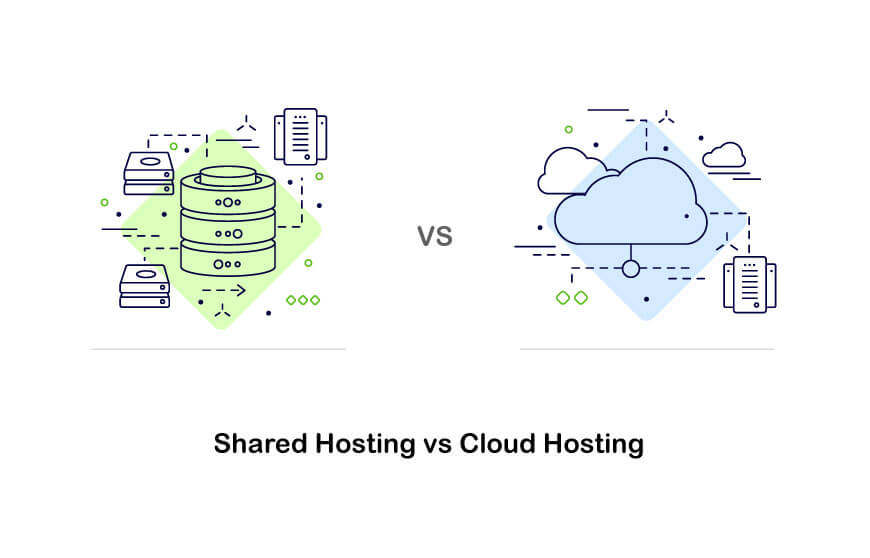
Shared hosting and cloud hosting are two different types of web hosting services that differ in their fundamental approach to resource allocation and scalability.
Shared hosting is the most basic and affordable type of web hosting. In shared hosting, multiple websites share the resources of a single physical server, including CPU, memory, and storage. This shared environment makes shared hosting very cost-effective, but it also means that your website’s performance can be affected by the activity of other websites on the same server.
Cloud hosting, on the other hand, provides dedicated resources to each website. These resources are spread across multiple physical servers, often in different data centers around the world. This distributed architecture makes cloud hosting more scalable and reliable than shared hosting. Cloud hosting also provides greater flexibility in terms of resource allocation, allowing you to scale your resources up or down as needed.
Here is a table summarizing the key differences between shared hosting and cloud hosting:
| Feature | Shared Hosting | Cloud Hosting |
|---|---|---|
| Resource allocation | Shared | Dedicated |
| Scalability | Limited | High |
| Reliability | Lower | Higher |
| Flexibility | Less | More |
| Cost | Lower | Higher |
When to choose shared hosting:
- You have a small website with low traffic
- You are on a tight budget
- You are not concerned about performance or scalability
When to choose cloud hosting:
- You have a medium or large website with high traffic
- You need high performance and reliability
- You need flexibility in resource allocation
- You are willing to pay for more expensive hosting
In general, cloud hosting is the better choice for most businesses, as it offers greater flexibility, scalability, and reliability. However, shared hosting can still be a good option for small businesses with very basic needs.









No Comments
Leave a comment Cancel